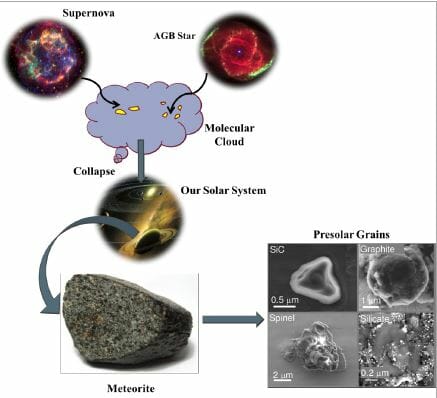Universitetsavisen
Nørregade 10
1165 København K
Tlf: 21 17 95 65 (man-fre kl. 9-15)
E-mail: uni-avis@adm.ku.dk
PhD thesis defense
PhD thesis defense — Manish N. Sanghani at Geological Museum 4 DEC
Date & Time:
Place:
Auditorium, Geological Museum, Øster Voldgade 5-7, 1350 CPH K
Hosted by:
Geology Section, Department of Geosciences and Natural Resource Management (IGN)
Cost:
Free
Manish Navinchandra Sanghani defends his thesis,
Probing the solar system’s prenatal history.
Insights from coordinated isotopic, microstructural and chemical investigations of presolar silicate and oxide stardust grains.
Supervisors:
Professor Martin Bizzarro, IGN and Globe Institute
Dr. Kuljeet Marhas, Physical Research Laboratory – India
Assessment Committee:
Professor Sara Russell, Natural History Museum, London – UK
Research Scientist Jan Leitner, Max Planck Institute for Chemistry – Germany
Professor James Connelly (chair), IGN and Globe Institute
Abstract (shortened):
Primitive extraterrestrial materials like carbonaceous chondrites, interplanetary dust particles and cometary samples contain tiny dust grains that are formed in the envelopes of massive stars and in the ejecta of novae and supernovae (SNe) explosions before the formation of our solar system and, hence, called presolar grains. Following their formation, these tiny stardust grains of submicron size traversed through the interstellar medium (ISM) before being incorporated into the cloud of gas and dust that collapsed and created our solar system. Presolar grains survived the high energy processes that created our solar system and, in their isotopic compositions, preserved the fingerprints that are the nucleosynthetic signatures of the parent stellar sources of the grains. Highly anomalous isotopic compositions of presolar grains in one or more elements, as compared to the solar system values, are the imprints of various nucleosynthetic processes that happened in the parent stars of the grains, now being revealed by laboratory techniques. Several of the presolar phases found in the primitive materials by laboratory techniques are carbon-rich silicon carbides (SiC) and graphites, nitrogen-rich silicon nitrides (Si3N4) and oxygen-rich oxides and silicates. Refractory presolar phases like SiC and oxides are isolated from primitive meteorite matrices by dissolving primitive meteorites using acid treatments. In contranst, finding tiny stardust presolar silicates from isotopically normal solar system silicate matrix requires an in situ search method achieved by a specialized instrument called the NanoSIMS (Nano Secondary Ion Mass Spectrometer). High spatial resolution and high transmission capabilities of the NanoSIMS made the discovery of presolar silicates possible. Correlated multi-isotopic, microstructural and chemical investigations of presolar silicates have provided novel insights for better understanding stellar nucleosynthesis, stellar grain formation scenarios, grain alteration mechanisms and the galactic chemical evolution (GCE). In this work, we use an integrated approach to better understand the distribution, abundance, chemical compositon, structure and isotopic compositon of presolar silicate from primitive meteorites
The thesis is available for inspection at the PhD administration office at Rolighedsvej 23, 1958 Frederiksberg C
